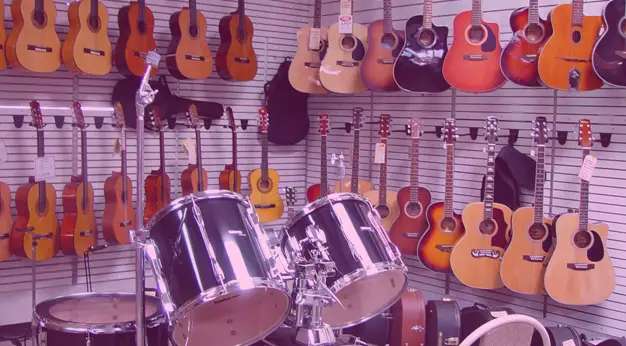If you’re an aspiring musician or music label looking to get your music out there and reach a wider audience, becoming a Spotify distributor is an essential step towards success.
Spotify, one of the largest music streaming platforms globally, allows artists to distribute their music directly to millions of listeners worldwide.
In this guide, we’ll walk you through the process of becoming a Spotify distributor and provide valuable tips and insights to help you make the most of this opportunity.
How to Become a Spotify Distributor
To become a Spotify distributor and get your music on their platform, follow these step-by-step instructions:
Step 1: Create a Spotify for Artists Account
The first step towards becoming a Spotify distributor is to create a Spotify for Artists account. This account will serve as your dashboard and give you access to valuable tools and resources to manage your music on Spotify.
Visit the Spotify for Artists website and sign up using your Spotify account or create a new one.
Step 2: Verify Your Artist Profile
Once you’ve created your Spotify for Artists account, it’s essential to verify your artist profile. Verification provides authenticity and unlocks additional features and insights. Follow the verification process outlined by Spotify, which may involve confirming your identity and linking your social media accounts.
Step 3: Prepare Your Music for Distribution
Before you can distribute your music on Spotify, you need to ensure it meets the platform’s guidelines and quality standards. Here are some key steps to prepare your music for distribution:
1. High-Quality Audio Recording
Ensure your music is professionally recorded and of high quality. Invest in a reputable recording studio or work with experienced producers to achieve a polished sound.
2. Metadata and Artwork
Prepare accurate and detailed metadata for your music, including song titles, album information, genre, and release dates. Additionally, create eye-catching artwork that represents your music visually.
3. Copyrights and Licensing
Make sure you have obtained the necessary copyrights and licenses for your music. This includes obtaining permission for any samples or cover songs you might be using.
Step 4: Choose a Music Distribution Service
To distribute your music to Spotify and other streaming platforms, you’ll need to work with a music distribution service. These services act as intermediaries between artists and streaming platforms, handling the technical aspects of music distribution. Some popular music distribution services include DistroKid, TuneCore, and CD Baby. Compare their features, pricing, and reputation before making a decision.
Step 5: Upload and Distribute Your Music
Once you’ve chosen a music distribution service, it’s time to upload and distribute your music to Spotify.
Follow the instructions provided by your chosen service to upload your tracks, provide the necessary metadata, and set your release date. Ensure you follow all guidelines to ensure a smooth and successful distribution process.
Step 6: Promote Your Music
Distributing your music on Spotify is just the beginning. To maximize your reach and engagement, it’s crucial to promote your music effectively. Here are some strategies to consider:
1. Create Engaging Social Media Content
Utilize platforms like Instagram, Facebook, and Twitter to connect with your audience. Share behind-the-scenes content, teasers, and updates to generate excitement and build a loyal fanbase.
2. Collaborate with Influencers
Identify influencers and popular music curators in your genre and collaborate with them to amplify your music’s reach. Consider sending them exclusive previews or requesting features in their playlists.
3. Engage with Your Audience
Respond to comments, messages, and feedback from your listeners. Building a strong connection with your audience helps foster loyalty and can lead to increased support and exposure.
FAQs about Becoming a Spotify Distributor
How much does it cost to become a Spotify distributor?
- The cost of becoming a Spotify distributor varies depending on the music distribution service you choose. Prices typically range from a one-time fee per release to annual subscription plans.
Can I distribute music on Spotify without a record label?
- Absolutely! Spotify allows independent artists and music labels to distribute their music directly, eliminating the need for a record label.
How long does it take for music to appear on Spotify after distribution?
- The time it takes for your music to appear on Spotify after distribution can vary. It typically ranges from a few days to a couple of weeks, so plan your release accordingly.
Can I distribute my music exclusively on Spotify?
- While Spotify is a popular platform, it’s beneficial to distribute your music on multiple platforms to reach a wider audience. Consider using a music distribution service that offers distribution to various streaming platforms.
Do I retain ownership of my music when distributing it on Spotify?
- Yes, you retain full ownership of your music when distributing it on Spotify. Spotify does not claim any ownership rights to the music you distribute.
Can I change or update my music after distribution on Spotify?
- Yes, most music distribution services allow you to make changes or updates to your music after distribution. However, keep in mind that it may take some time for the changes to reflect on Spotify and other platforms.
Conclusion
Becoming a Spotify distributor opens up a world of opportunities for musicians and music labels to showcase their talent and connect with a vast audience.
By following the steps outlined in this guide, you can confidently navigate the process of becoming a Spotify distributor and set yourself up for success.
Remember to focus not only on the distribution itself but also on promoting your music and engaging with your listeners. Embrace the power of Spotify as a platform to elevate your music career and make a lasting impact on the music industry.



